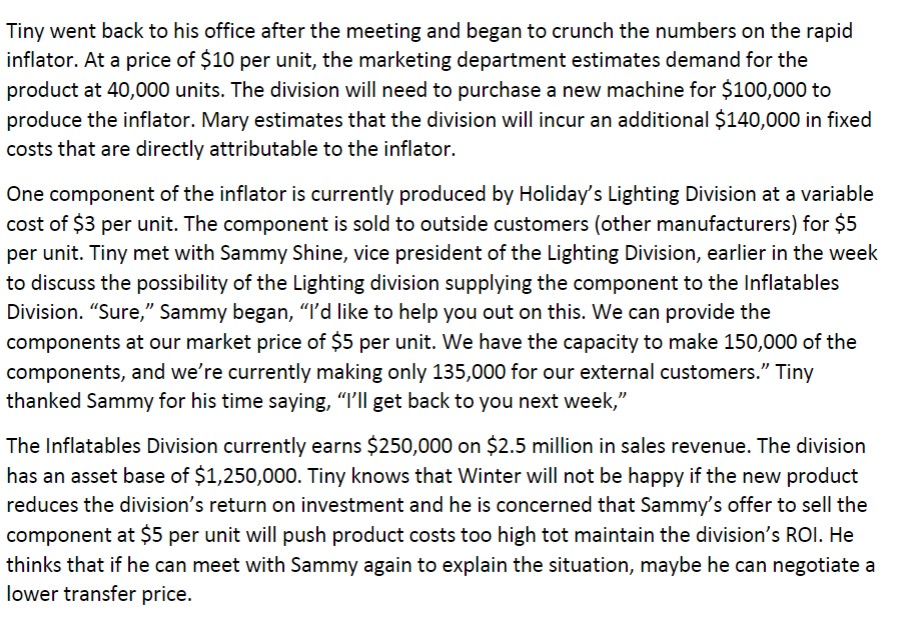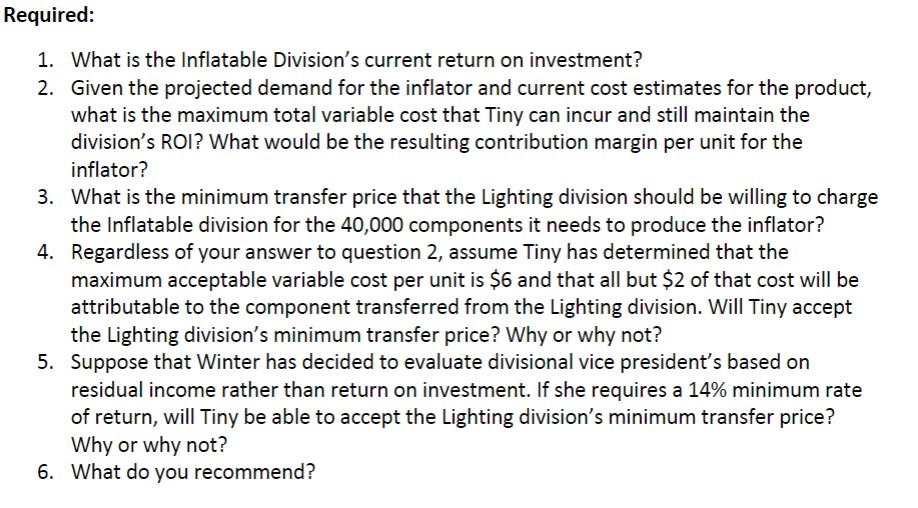

Tiny went back to his office after the meeting and began to crunch the numbers on the rapid inflator. At a price of $10 per unit, the marketing department estimates demand for the product at 40,000 units. The division will need to purchase a new machine for $100,000 to produce the inflator. Mary estimates that the division will incur an additional $140,000 in fixed costs that are directly attributable to the inflator. One component of the inflator is currently produced by Holiday's Lighting Division at a variable cost of $3 per unit. The component is sold to outside customers (other manufacturers) for $5 per unit. Tiny met with Sammy Shine, vice president of the Lighting Division, earlier in the week to discuss the possibility of the Lighting division supplying the component to the Inflatables Division. Sure," Sammy began, I'd like to help you out on this. We can provide the components at our market price of $5 per unit. We have the capacity to make 150,000 of the components, and we're currently making only 135,000 for our external customers." Tiny thanked Sammy for his time saying, "I'll get back to you next week," The Inflatables Division currently earns $250,000 on $2.5 million in sales revenue. The division has an asset base of $1,250,000. Tiny knows that Winter will not be happy if the new product reduces the division's return on investment and he is concerned that Sammy's offer to sell the component at $5 per unit will push product costs too high tot maintain the division's ROI. He thinks that if he can meet with Sammy again to explain the situation, maybe he can negotiate a lower transfer price. Required: 1. What is the Inflatable Division's current return on investment? 2. Given the projected demand for the inflator and current cost estimates for the product, what is the maximum total variable cost that Tiny can incur and still maintain the division's ROI? What would be the resulting contribution margin per unit for the inflator? 3. What is the minimum transfer price that the Lighting division should be willing to charge the Inflatable division for the 40,000 components it needs to produce the inflator? 4. Regardless of your answer to question 2, assume Tiny has determined that the maximum acceptable variable cost per unit is $6 and that all but $2 of that cost will be attributable to the component transferred from the Lighting division. Will Tiny accept the Lighting division's minimum transfer price? Why or why not? 5. Suppose that Winter has decided to evaluate divisional vice president's based on residual income rather than return on investment. If she requires a 14% minimum rate of return, will Tiny be able to accept the Lighting division's minimum transfer price? Why or why not? 6. What do you recommend








